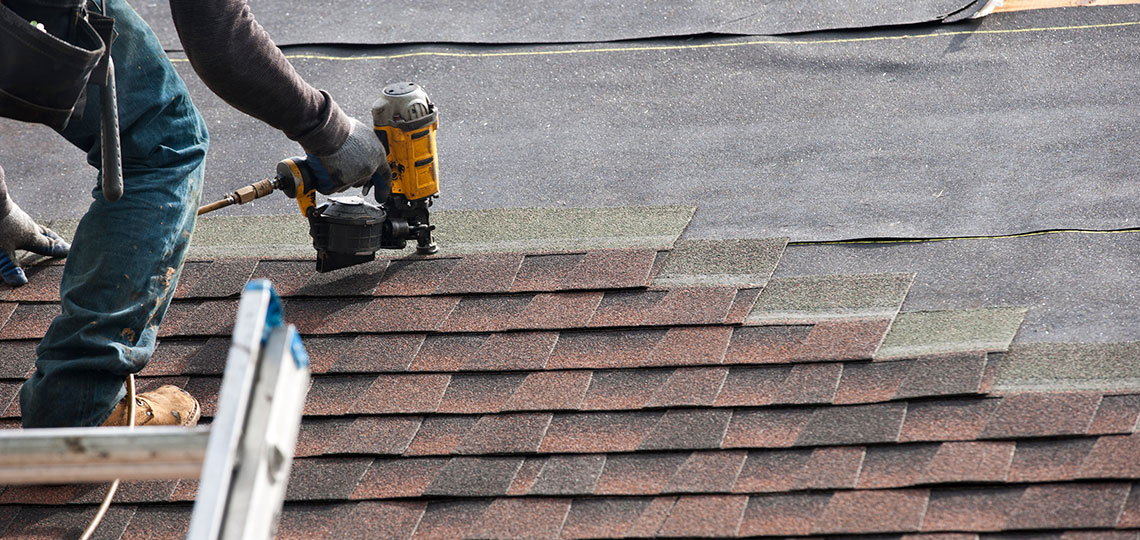A Comprehensive Look at Roofing Companies Gainesville Homeowners Recommend
Wiki Article
Ideal Practices for Ensuring Appropriate Roofing Ventilation
Making certain correct roof covering air flow is vital for the long life and effectiveness of a roof system. A balanced consumption and exhaust air vent ratio, frequently 1:300, plays a crucial function, with intake vents preferably placed at the lower side of the roof for cool air access and exhaust vents at the top for cozy air leave. Regular inspections to recognize blockages and preserve clear air movement are vital. Furthermore, keeping insulation far from vents is essential to avoid air movement constraint. Understanding these foundational components sets the stage for more thorough insights right into setup and upkeep practices that can substantially boost your roof's performance.Understand Ventilation Fundamentals
Correctly understanding air flow essentials is crucial for guaranteeing the durability and effectiveness of roof. Effective ventilation alleviates moisture build-up and temperature level extremes in the attic, both of which can lead to considerable architectural damage gradually. A well-ventilated roof covering assists in preventing usual issues such as mold development, timber rot, and ice dams, which can compromise the integrity of the roof covering materials and the underlying frameworks.The main objective of air flow is to facilitate the activity of air, permitting a regular exchange in between the exterior and interior settings. This balance is accomplished with a combination of intake and exhaust vents that collaborate to maintain optimum air movement. Intake vents, typically located along the eaves or soffits, allow fresh air to go into the attic room room, while exhaust vents, commonly located at or near the roofing ridge, make it possible for warm, damp air to get away.
Secret factors affecting the efficiency of roofing ventilation consist of appropriate positioning, ample sizing, and guaranteeing that both consumption and exhaust vents are unblocked. Regular evaluation and upkeep are important to identify prospective obstructions, damages, or inadequacies in the ventilation system, consequently guarding the roof covering's performance and durability.
Kinds Of Roofing System Vents
Roofing vents play an important role in keeping effective attic ventilation and, by extension, the general health of the roof covering system. Various kinds of roof covering vents are available, each with one-of-a-kind benefits customized to specific roof needs. Ridge vents, for instance, are set up along the roof covering's top, permitting warm, moist air to escape from the attic room. They offer constant air flow and blend perfectly with the roofline, making them both reliable and aesthetically pleasing.
Soffit vents are set up under the eaves and job in tandem with roof vents to make certain a balanced intake and exhaust system. By enabling cooler air to enter from below, soffit vents promote the expulsion of warm air through upper vents. Gable vents, located on the exterior walls of the attic, deal one more effective solution, especially in homes with saddleback roofs.
Analyze Your Existing Air Flow

Next, consider the age and problem of your roof covering materials and ventilation elements. Older systems may not adhere to present building codes or might have weakened over time, lowering their performance. Conduct a detailed evaluation to recognize any kind of indications of wear and tear, such as corrosion, damages, or spaces that might compromise the system's efficiency.
Furthermore, gauge the attic room temperature level and humidity levels. High temperatures and humidity can indicate poor ventilation.
Installation Best Practices
Efficient installment of roof ventilation systems is vital for making sure optimum efficiency and long life. Correct installation begins with recognizing the details ventilation needs of the roofing system and the structure it covers. This includes determining the right proportion of consumption to tire vents, commonly sticking to the 1:300 rule, which specifies one square foot of air flow for every 300 square feet of attic flooring area.
The placement of vents is just as critical. Intake vents need to be installed at the roofing's reduced side, usually in the soffits, to enable awesome air to enter. Exhaust vents, on the various other hand, should be installed near or at the roofing system's top to facilitate the departure of warm, moist air. This produces a natural air flow that assists maintain temperature level and moisture balance within the attic area.
Seal all vent links meticulously to protect against air leaks and prospective water seepage. Use premium products and adhere to manufacturer guidelines to make certain durability and effectiveness. In addition, incorporating ridge vents with baffles can significantly enhance air flow efficiency by stopping wind-driven rainfall and snow from getting in the attic.
Ultimately, accurate installment of roof air flow systems alleviates possible problems such as mold growth, ice dams, and structural damage, ensuring the roof's integrity and the structure's total health.
Normal Upkeep Tips
Consistency in maintenance methods is basic to ensuring the long-term efficiency of roofing ventilation systems. During these examinations, guarantee that vents are totally free of debris, nests, and various other obstructions that can hamper airflow.
Cleansing the vents is one important source more essential job. Use a soft brush or a vacuum cleaner to remove dirt and particles from consumption and exhaust vents. Be mindful not to harm the vent screens or louvers click site during the procedure. Additionally, evaluate the attic room room for any kind of signs of water damage, which might endanger the honesty of the roof.
Proper insulation is similarly important. Ensure that attic room insulation does not obstruct the vents, as this can severely restrict air flow. If any type of insulation has moved or cleared up, rearrange or replace it to preserve a reliable barrier.
Last but not least, replace any damaged or missing out on components immediately. Busted vents, broken roof shingles, or tatty flashing can all add to poor ventilation and should be dealt with right away. Normal upkeep makes certain that the roof covering ventilation system operates optimally, thereby extending the life expectancy of the roof covering itself.
Verdict
Making sure correct roof air flow is paramount for maintaining the performance and longevity of a roof. Adherence to the 1:300 consumption and exhaust air vent proportion, combined with the strategic placement of vents, is essential. Normal semiannual examinations, debris cleaning, and ensuring insulation does not block air flow are essential methods. Executing these best methods will certainly foster a well-ventilated roof, consequently minimizing prospective issues connected to moisture buildup and too much heat, ultimately prolonging the roof covering's life expectancy.A well balanced consumption and exhaust air vent proportion, typically 1:300, plays a crucial duty, with consumption vents preferably positioned at the lower edge of the roof covering for trendy air entry and exhaust vents at the height for cozy air leave. Intake vents, generally situated along the eaves or soffits, allow fresh air to get in the attic area, while exhaust vents, usually situated at or near the roofing ridge, make it possible for hot, moist air to escape.
Soffit vents are installed under the eaves and work in tandem with roofing vents to ensure a balanced intake and exhaust system. By allowing cooler air to enter from below, soffit vents assist in the expulsion of hot air through upper vents. Adherence to the 1:300 intake and exhaust air vent proportion, coupled with the calculated placement of vents, is essential.
Report this wiki page